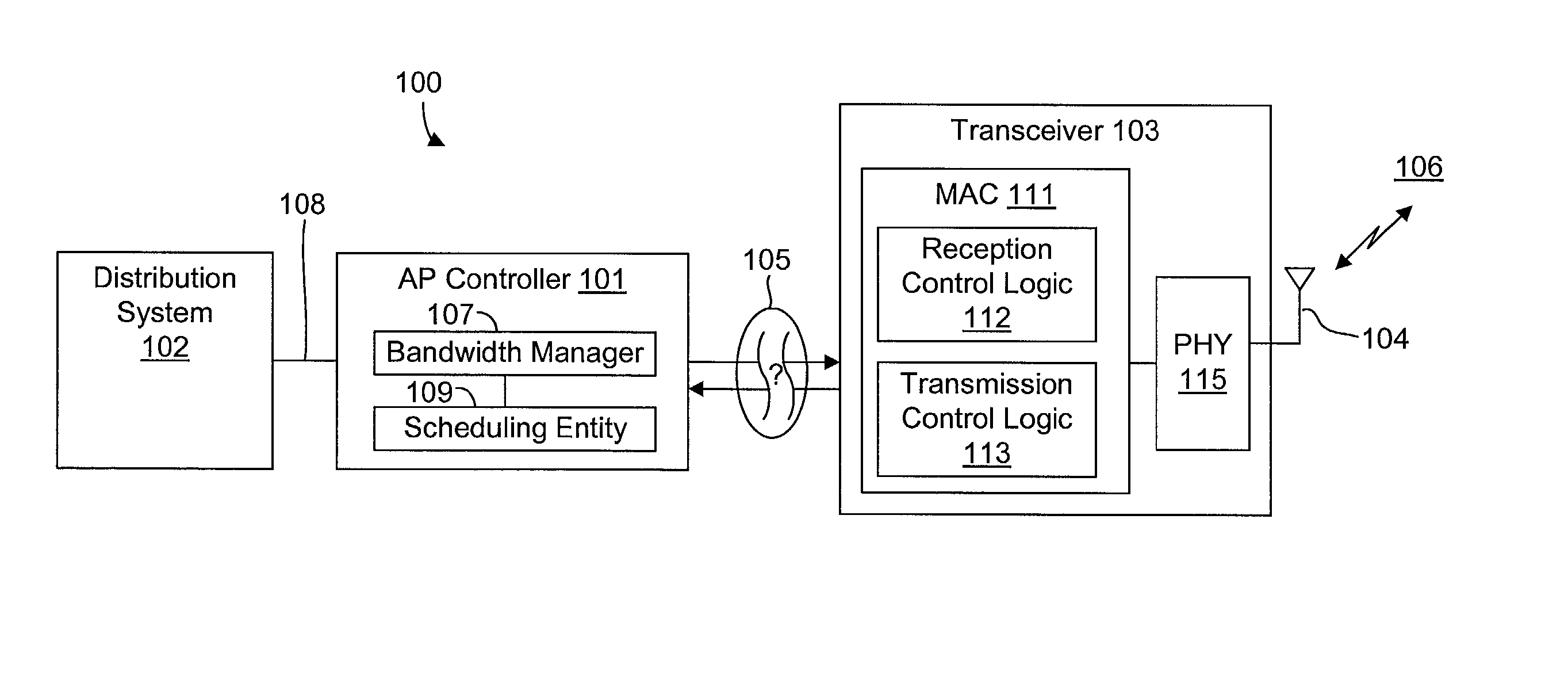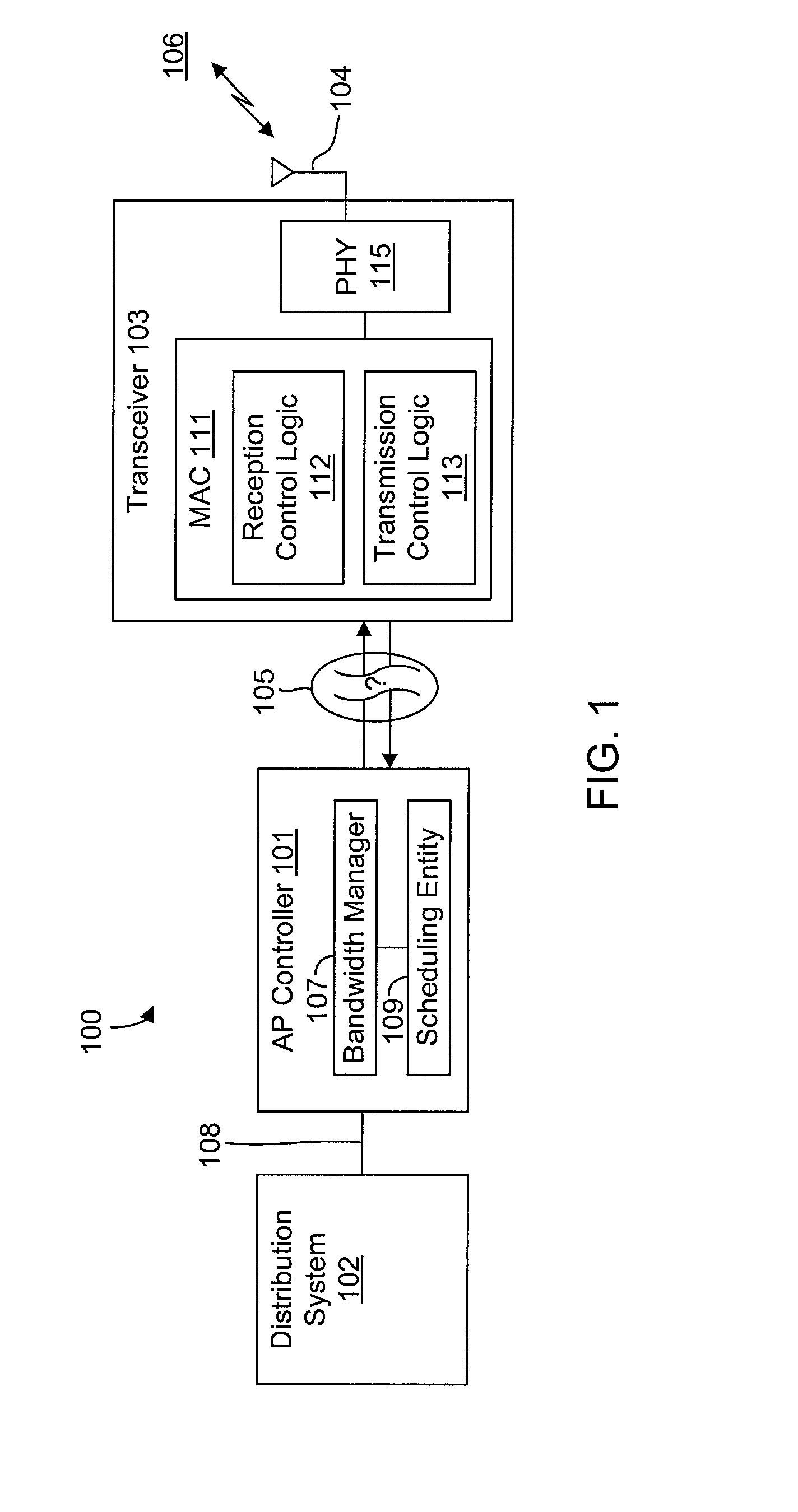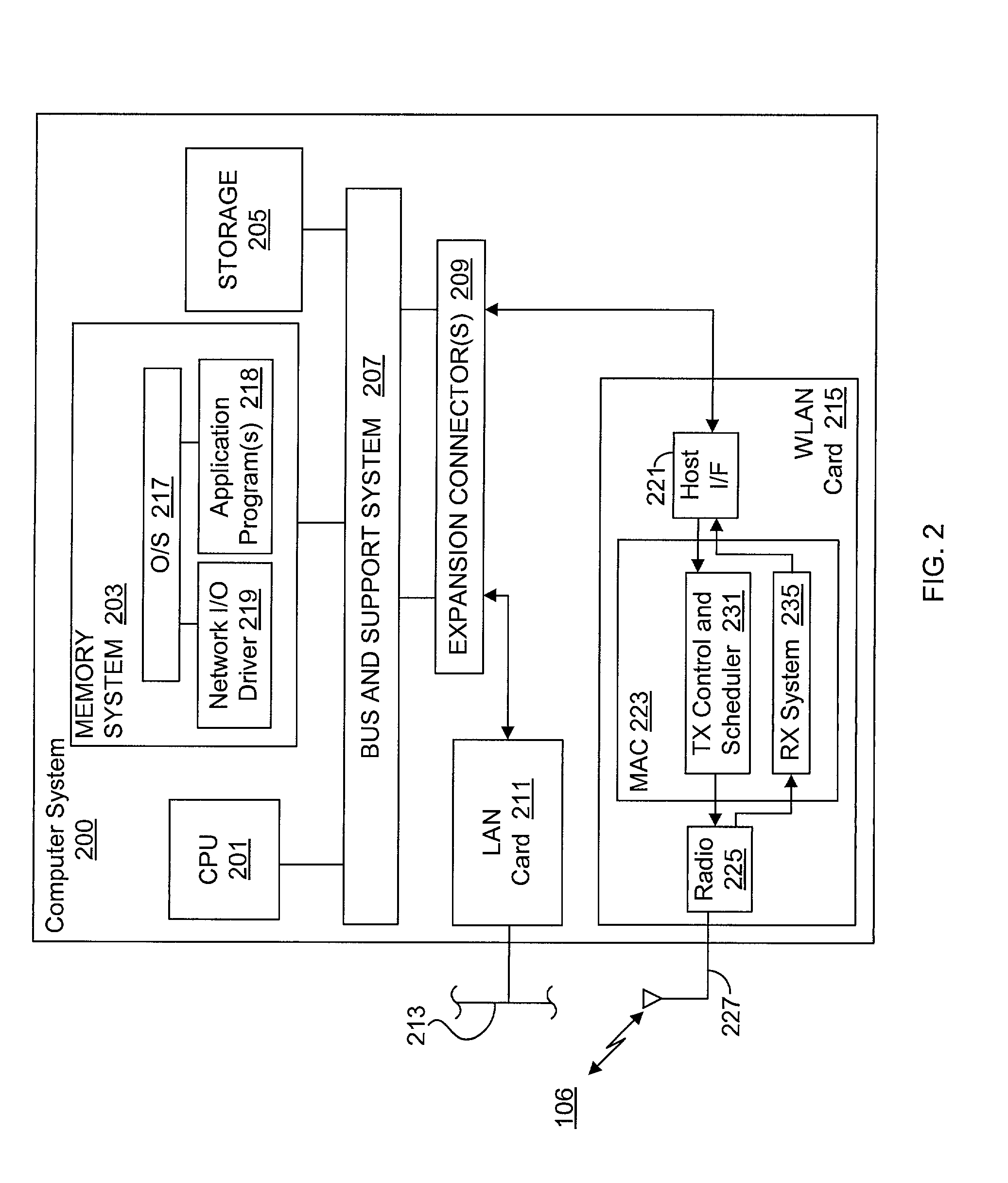System and method for providing a selectable retry strategy for frame-based communications
a frame-based communication and selectable technology, applied in the field of system and method for providing selectable retry strategy for frame-based communications, can solve the problems of multi-path noise, unoptimized lan communication, and noisy typical environment of wireless communication, so as to improve the use of wireless communication, eliminate the time for the acknowledgement frame and its inter-frame, and selectively suppress the acknowledgement response
- Summary
- Abstract
- Description
- Claims
- Application Information
AI Technical Summary
Benefits of technology
Problems solved by technology
Method used
Image
Examples
Embodiment Construction
[0050] FIG. 1 is a simplified block diagram of an access point (AP) 100 within a wireless communication system. The AP 100 includes a station host or AP controller 101 and a wireless network transceiver 103 that communicate in a wireless medium 106 via at least one antenna 104. It is noted that the AP 100 is also representative of the applicable functionality of a wireless station in accordance with embodiments of the present invention. In the case of a station, the AP controller 101 is typically a personal computer (PC), wireless information appliance, or the like, with various subsystem functions performed by software executing on a processor that is also used to perform other functions of the station. In the case of an AP, the AP controller 101 is typically a dedicated processor that only performs the network-related functions, although there are embodiments of an access point in software that runs on a PC. The more extensive set of functions for illustrating the present inventio...
PUM
 Login to View More
Login to View More Abstract
Description
Claims
Application Information
 Login to View More
Login to View More - R&D
- Intellectual Property
- Life Sciences
- Materials
- Tech Scout
- Unparalleled Data Quality
- Higher Quality Content
- 60% Fewer Hallucinations
Browse by: Latest US Patents, China's latest patents, Technical Efficacy Thesaurus, Application Domain, Technology Topic, Popular Technical Reports.
© 2025 PatSnap. All rights reserved.Legal|Privacy policy|Modern Slavery Act Transparency Statement|Sitemap|About US| Contact US: help@patsnap.com



